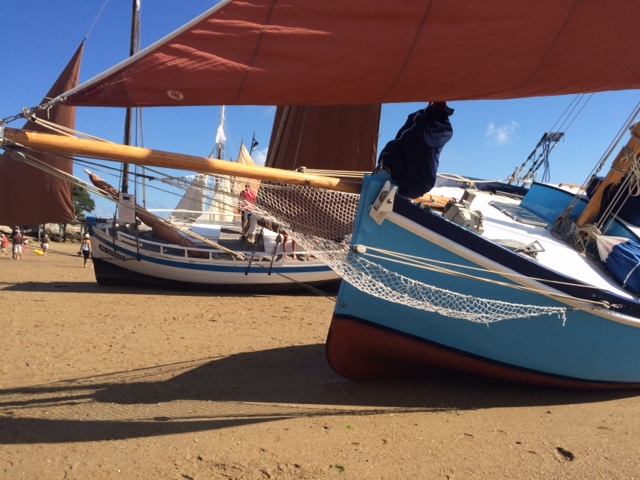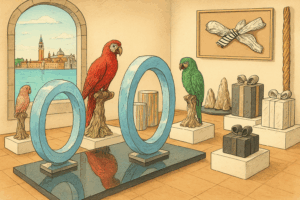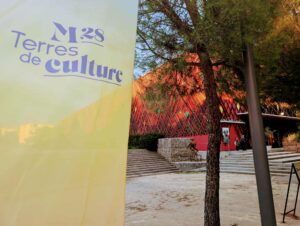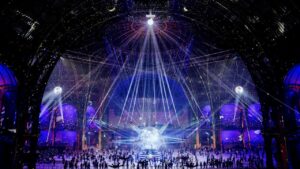The Island of Noirmoutier, between salt and sea

Over a total area of 48km2 and 18km long, the island of Noirmoutier remains insular in the spirits despite the passage of Gois, submersible pavement of 4km accessible at low tide and the construction of the bridge built in 1971 connecting it to the continent and has close 65% of second homes that smooth the local economy that can accommodate peaks of 100,000 visitors per day in summer. Thematic tours are proposed by the Tourist Office, covering all the assets of this territory which we will discuss the best aspects.
An Island to stem the rise of the ocean, to which it must yet all …


Lovers of wild and unspoilt land allowing the cultivation of several natural varieties benefiting from the immediate proximity to the Atlantic Ocean, such as these mythical potatoes called bonnottes, whose world reputation is second to none, these oysters and salt marshes bringing iodine nourishing these formerly food crops. These areas to the apology of the fleur de sel have been gaining interest in recent years, from 20 farms in the 70s to 110 today (Photo credits: Alexandre Plateaux).
A tourism also attracted by a rich cultural life as well as nearly 83km of cycle paths crisscrossing wooded landscapes (forests of green oaks and mimosas of Nice proving the existence of a microclimate, 3 ° more on average than the continent) .
The wind of the sea brought their batches of forces allowing formerly the 50 mills of the island (now regrouped between Guérinière and Herbaudière) to work multiple cereals: the barley, the buckwheat and the oats sown on the bossis these embankments that separated marshes and creeks. Infrastructures characterizing an island marked by reclamation, partly initiated by the Jacobsen, Belgian salt merchants arrived in the 18th century. A beneficent family has also given technical support for the design of protective dams for the rising waters for this island very exposed to the influx marine.
Thus hundreds of hectares of marshes are dried up with the techniques imported by the Flemish, notably by Jean-Corneille Jacobsen who made the island gain nearly 1000 hectares.
In addition, a hundred fishing boats registered in the Quartier des Affaires Maritimes are busy reporting their daily catch at the Criée de l’Herbaudière, famous for its line bar (preserved from stress toxins and destined for Parisian restaurants). like soles, lobsters and spiders). Seafood products also available to individuals from 9am behind the Auction on the OPPAN market as well as the daily rotating markets that serve as meeting places for both locals and holidaymakers.
The oyster port of Bonhomme is located on the Guérinière, the narrowest place on the island, also provides direct supply of oysters that grow on tables in the open sea for 3 years and on the clear (pools of water). sea) of the Bay of Bourgneuf, hosting many cords spat.
Noirmoutier, a chatelaine land of cinema and nautical culture

The city of Noirmoutier en Île was originally built around Banzeau District, the oldest part of the island, originally populated with cabins and now replaced by typical fishermen’s houses of the 18th century. coaltar in foundation to avoid infiltrations.
A district originally founded around 674, thanks to the foundation by the monk Saint Philibert, founder of the Monastery of Hermoutier, the Abbey Church of Noirmoutier, and previously of the Jumieges Abbey in Normandy. In addition, this religious personality allowed the development of salt culture.

Another historical episode was the building of the Château de Noirmoutier in the 12th century, despite some vestiges recorded around 830, in response to the many Norman assaults against the Island. Originally governed by the lords of La Garnache, it passes into the hands of the dynasty of Trémoille, then viscount of Thouars, in the 14th century.
The almost thousand-year-old building, with a 20-meter dungeon built with buttresses, still fascinates today with its almost original state and presents to its 40,000 visitors a year, a number of historic pieces present in the permanent collection. armchair in which the General d’Elbée was executed during the Revolution.


A breathtaking view from the top and the steps of the summer scene (Photo credits: Alexandre Plateaux).

In addition, temporary exhibitions are regularly presented, including this year (until November 12) entitled “Noirmoutier, an Island in the cinema” and pays tribute to the various shootings taking place on the Island. Landscapes dear to the filming of the “Holidays of the Little Nicolas”, as well as directors like Agnès Varda, Claude Sautet, Arnaud Desplechin; so many cinematographic works in front of their salvation by a fruitful collaboration with the Bureau of Reception of the filming of Pays de la Loire. Lastly, each summer for 25 years, during 3 weeks, there is a Theater Festival in the Château, which attracts nearly 700 spectators each evening.


The house on the beach Mardi Gras where was filmed “Caesar and Rosalie” (Photo credits: Alexandre Plateaux).

Below these ramparts lies the base of what constitutes the revival of the shipyards, perpetuating a tradition of boat building; allowing the Island to trade, travel or even defend itself. There are 2 professional shipyards, such as the Chantiers naval shipyard, launched in 2001 by Frederic Mingret, a manufacturer of custom-built boats, including the 22-meter Martroger, the last sea marker, veiled by La Voilerie Burgaud.
The Régates du Bois de la Chaise, a must-see event for maritime heritage

For this 28th edition the Maritime Heritage Preservation Association, La Chaloupe, originally called La Touline, organizes this annual summer event of the Bois de la Chaise Regatta, in honor of the site littered with charming houses of romantic style, the Empire period, embellished with the forest of the Bois de la Chaise and surveyed in its time by Auguste Renoir (Photo credits: Alexandre Plateaux).


La Chaloupe, whose seat is located on the old port of the city of Noirmoutier, has multiple strings to its bow and is committed to lead to success the organization of this annual gathering of boats mostly traditional sailboats, over three days festivities in the heart of August and around the Bay of Bourgneuf.
This, in addition to its original mission of safeguarding and enhancing the built and floating elements of the heritage port of Noirmoutier, resulting both in the restoration of wooden boats and the transmission of knowledge of former marine carpenters even the l learning to pilot these rigs.


For this edition, 66 old rigs divided into 5 different fleets (different obediences: square lighthouse, Marconi, sail houari or auric) including 300 team members equally enthusiastic about the idea of competing for a Competition or Walk . Most of this maritime event takes place on the shores of the emblematic Plage des Dames, lined with traditional white-spotted beach huts and its lighthouse (photo credits: Anne Giraud for “Chapitre T”).




Some shots at sea of the participants (Photo credits: Mélanie Joubert / Le Chasse-Marée), more pictures on this link.



This year and in particular during the animations on the place of the Castle, which will also know an embrasement sonorisé, a lighting will be focused on a part of the collection of the Naval Construction Museum of Noirmoutier presented outside its walls, with 120m2 of history illustrated by demonstrations of know-how of technical gestures. The whole intended and presented to the public about 20 000 spectators, an opportunity to discover a significant part of the immutable link between the Island and the sailing, with theme 2017: “Port and Heritage”.

A space of exchange with the public ashore with animations around the Castle and an inaugural “conflagration” (composed of lights of Bengal, in sound and light) on the pontoon (148m long, in mobile wood rot-proof at the origin and renovated in 2014) of the Estacade (former terminus of the steam train from Paris to Pornic) (Photo credits: Alexandre Plateaux).
https://www.instagram.com/p/BdPcgmyFxna/?taken-by=francevisiting




Fleets classified according to the types of boats: high-performance “sharks” and “dragons”, 2 Yoles of Bantry, a category “Belle Plaisance” including the last boat of Jules Verne, the “Saint Michel 2”; there are also replicas. All these unique pieces still operational, saved from the weather, sailed their respective experiences near the coasts to remain visible to the public, both at sea and on land, with this impressive static ballet of sand-blasted hulls at sea. the incredible beaching at low tide (Photo credits: Anne Giraud for “Chapitre T”).








